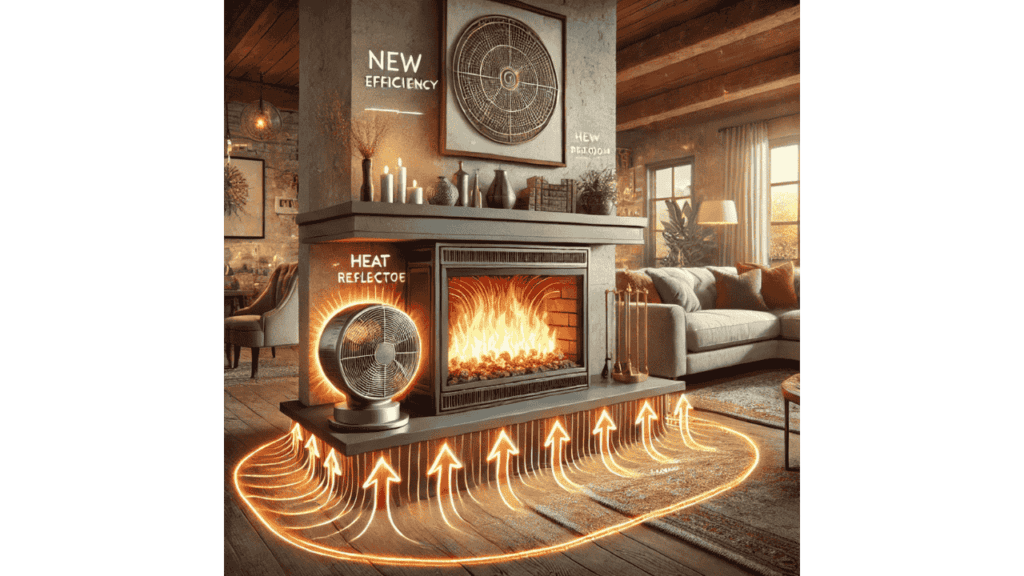There’s nothing quite like the cozy warmth of a fireplace on a chilly day, but sometimes, you might feel like your gas fireplace isn’t putting out as much heat as it could. Whether you’re looking to cut down on energy costs or simply want to increase the comfort level of your living space, enhancing your fireplace’s heat output can make a significant difference. In this guide, I’ll share some tried-and-true tips to help you get the most out of your gas fireplace, ensuring it’s not just a beautiful focal point but a powerful source of warmth for your home. Let’s get your fireplace up to its full potential, so you can enjoy more warmth with less worry.
Why Do You Want More Heat from Your Gas Fireplace?
Boosting the heat output of your gas fireplace isn’t just about staying warm; it’s about optimizing your home’s energy use and saving money. Let’s dive into why you might want to turn up the heat.
Energy Efficiency
Increasing the efficiency of your gas fireplace means more heat with less gas. If your fireplace heats up your space adequately, you won’t need to crank up the central heating as much. This targeted heating helps in reducing your overall energy consumption, making your home greener.
Cost Savings
It’s straightforward, better efficiency leads to lower energy bills. By maximizing the heat output of your gas fireplace, you’re using every bit of energy you pay for, which can significantly cut your heating costs over the colder months.
Increased Comfort
Lastly, there’s the undeniable benefit of comfort. A more efficient gas fireplace disperses heat more evenly and quickly throughout your living space, eliminating cold spots and creating a cozier environment for you and your family to enjoy.
Factors Affecting Heat Output in Gas Fireplaces
Several key factors can influence how much heat your gas fireplace can generate. Understanding these can help you enhance its performance effectively.
BTU Rating
The BTU (British Thermal Unit) rating of your fireplace directly impacts its heat output. A higher BTU rating means the fireplace can produce more heat, which is crucial if you’re looking to warm up a larger area. It’s important to choose a fireplace with a BTU rating that matches the size of the space you need to heat.
Fireplace Design
The design of your fireplace also plays a significant role in how efficiently it heats. Features like the shape of the firebox, the placement of vents, and whether it’s a direct vent or a ventless model affect heat distribution and retention. A well-designed fireplace not only looks good but also maximizes heat output.
Ventilation
Proper ventilation is essential for safety and for maximizing heat efficiency. A poorly ventilated fireplace can lead to heat loss and even pose health risks. Ensuring that your fireplace has adequate ventilation will help improve the heat output while keeping indoor air quality safe.
Insulation
Insulation around your fireplace helps retain the heat it produces and prevents it from escaping through the walls and chimney. Good insulation ensures that the heat stays where you need it and doesn’t get lost to the outside, making your fireplace more effective at heating your home.
Expert Tips to Get More Heat from Your Gas Fireplace
Enhancing the heat output of your gas fireplace involves a few strategic tweaks and regular maintenance. Here are some expert tips to help you maximize warmth and efficiency.
Clean and Maintain Regularly
Regular cleaning and maintenance ensure your gas fireplace operates at peak efficiency. Dust and debris can block vents and affect the flame’s quality, reducing heat output. Keeping the burner and fan clean will help maintain a strong, efficient flame.
Use a Fireplace Blower
Installing a blower is a great way to increase heat circulation from your fireplace. Blowers help distribute the warm air throughout the room rather than letting it rise straight up to the ceiling or escape through the chimney.
Adjust the Damper
Proper damper adjustment can significantly affect your fireplace’s heating efficiency. Make sure the damper is open enough to allow for good airflow but not so much that warm air escapes up the chimney too quickly. This balance is key to maximizing heat retention.
Install Heat Reflectors
Heat reflectors placed behind the fire increase heating efficiency by reflecting heat back into the room, rather than allowing it to be absorbed into the wall or escape up the chimney. This simple addition can boost your fireplace’s heat output.
Use Fireplace Doors
Adding glass doors to your fireplace can help keep the warm air from escaping up the chimney when the fireplace is in use and even when it’s not. They also add a layer of safety by protecting against sparks and embers.
Upgrade with a Gas Fireplace Insert
If your current fireplace is outdated, consider upgrading to a modern gas fireplace insert. These are designed for better heat output and efficiency, and they can fit into the existing firebox, making them an easy upgrade.
Consider Zone Heating
Use your gas fireplace to heat the rooms you use most, rather than heating the entire house. This zone heating approach can reduce overall energy consumption while keeping commonly used areas comfortably warm.
Bottom Line
Boosting the heat output of your gas fireplace is not just about adding comfort to your home; it’s about optimizing performance and energy use for cost-effective warmth. By maintaining your fireplace, making smart upgrades like installing blowers or heat reflectors, and utilizing zone heating, you can significantly enhance the efficiency and effectiveness of your heating system. These improvements not only increase your comfort but also contribute to a more energy-efficient and environmentally friendly home. Embrace these changes, and you’ll enjoy a warmer space while keeping your heating costs down.
- 27 Farmhouse Fireplace Ideas That Bring Warmth & Charm - August 18, 2025
- 25 Fireplace Lighting Ideas to Illuminate Your Hearth - August 7, 2025
- How to Replace an Electric Fireplace Switch? - August 5, 2025



